April
2016
|
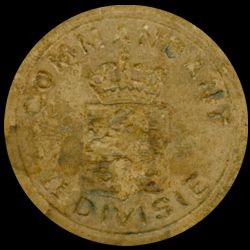
|
Although
the last week felt like autumn, spring has
finally shown its face a bit more often and brought a good number of
lovely sunny days. Fortunately these didn't coincide with the spring
edition of the biggest collectors fair in the Netherlands and Joop spent
two days browsing the stalls. Unfortunately he didn't score any new
decks for our collection and only a few interesting decks to trade.
So the different Ebays were visited a little more frequently and they
did bring us a couple of interesting decks. The Dutch auction site
brought us an early Lenormand deck by Wolfgang Reuter from Darmstadt,
probably from around 1865. It came close to becoming Deck of the Month
here. Joop was getting ready to scan the deck, when a telephone call
changed it all. |
|
Basically
each deck in our collection should produce a recollection of how and
where it was acquired, but there is only a limited number of decks, of
which we can still remember exactly how they became part of our
collection and this months deck will definitely be one of them. |
The deck is an
amazing find, but it comes with a surprising story too. In March there was a large collectors fair in the Beursfabriek in
Nieuwegein. Usually Joop spends two days there, but last month he completely
forgot about it. Too many distracting things on his mind, mainly the fact that
Miriam was in hospital at that time. However, a few days later he received a
call from Frank & Oscar, two friends, who wanted his opinion about a special
deck that they had found. Even over the phone Joop's interest was already raised
and when he came to see the deck a week later, he couldn't believe his
eyes. They told him that they had found the deck at the collectors fair that
Joop had missed and had bought it for a mere 5 euro. Of course Joop immediately
offered them a multitude of that, but they wanted to think it over first. It
took them about a month, so it wasn't
until the
23rd that the call came and as they don't live far away, we were the proud owners
within the hour.
And because we
believe in sharing........ ENJOY!
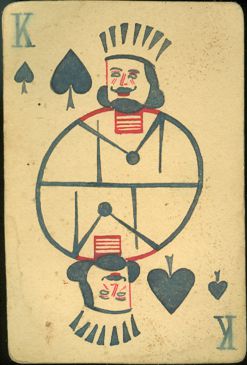
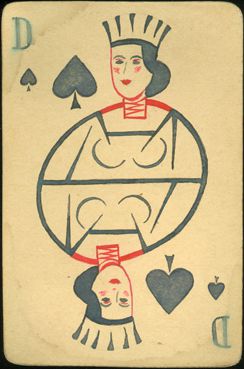

It's a unique deck
and not only in the sense that every self designed and hand painted deck will
always show small differences in the design. But there is only one other deck known
and that deck is part of the Dutch "Museon"
museum collection.
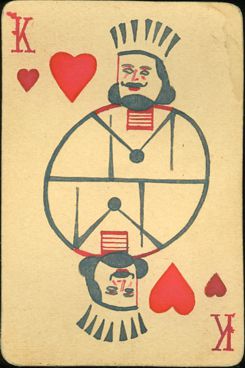
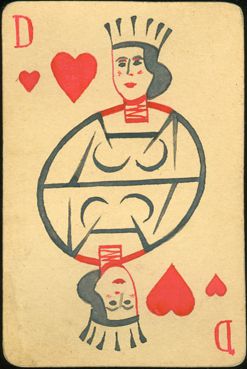
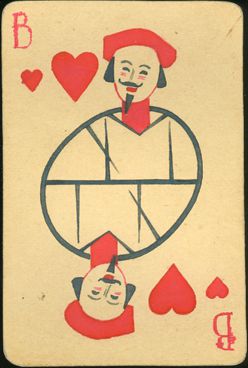
The pattern
shows a repeated series -of course with small differences- of three simple,
easily recognizable, images of the courtly figures. Still, they reveal the hand
of a schooled designer or artist. This is even more evident in the design of the
joker. Although H(eer), V(rouw) and B(oer) are seen as original Dutch indices,
the K(oning), D(ame) and B(oer) combination, which are in fact the regular
German indices, is also often used and accepted by Dutch players. The deck has
plain aces, where it's clearly visible that the designs were first done in lead
pencil and then filled up in water colors.
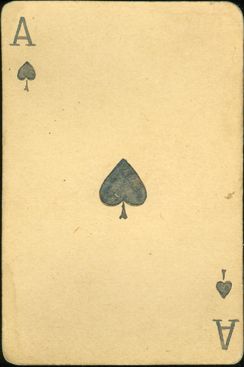
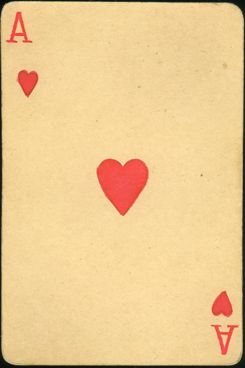
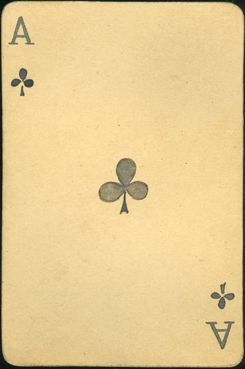
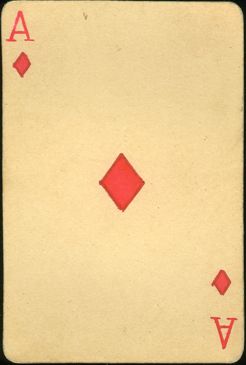

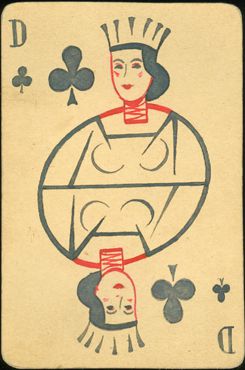
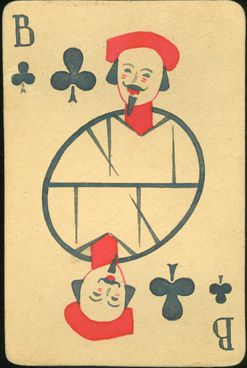

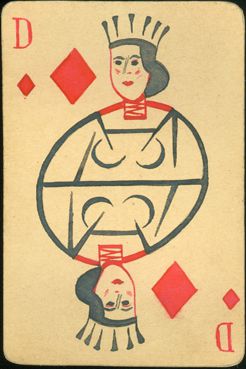
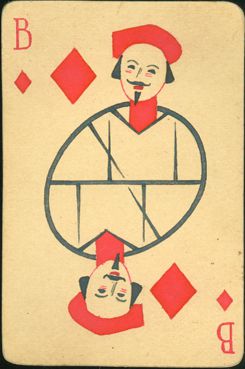
The deck
consists of 52 cards and a joker. All the cards are hand made and painted on the
blank backs of what seems to be half a postcard used for Veldpost (Field mail)
by the Dutch army in the former Dutch Indies. They were to be used by Dutch and
KNIL soldiers to contact family and friends. After the Dutch army was defeated
by the Japanese and most soldiers ended up in POW camps, these cards became
useless. Because paper and carton was scarce, the artist must have seen their
possibilities. All the cards in this deck were done on the same part of the
original postcard, so the backs all look alike. There are only 2 decks known
at the moment and the Museon deck has different backs. So if
the other half of the Veldpost cards has also been used to create a deck -thriftiness was a key word in those
days there- it's well possible that at least one more than these two known decks
has been made.
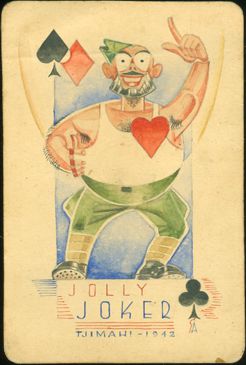
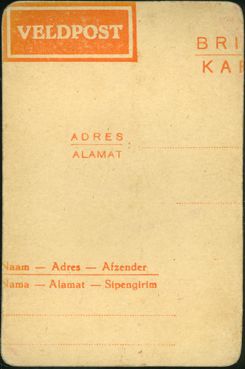
The deck
came with a unique joker, also done in water colors. The joker figure looks like
a Dutch soldier, but as he's depicted in undershirt, he probably represents a
Dutch POW. It's even possible that it's a caricaturized self portrait by the
artist. Anyway, here the craftsmanship of the artist is demonstrated, in
design and in technique. However, the real importance of the joker lies in the
mentioning of place and date and the signature.

|
The Museon
deck is decribed as being from Tjimahi
and it is dated 1942. The Museon deck was probably a gift to P.
Doornbosch, the commanding officer. This is probably based
on the fact that his position, rank and signature are on the top lid of
the box of that deck. The museum received the deck from the widow of mr.
Doornbosch. |
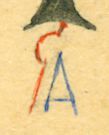 |
|
The barracks
of two huge camps of the Dutch 4th and 9th battalion at Tjimahi were used
by the Japanese occupant to detain about 10.000 POW's from March 1942
until February 1944. P. Doornbosch
was the commanding officer of the 4th battalion. In the camp was a
workshop where people could make drawings or paintings. It's well possible
that one of them made these 2 decks or maybe a few more. So who's the
unknown artist?
The initials can be read as G.A. There are lists with names of Dutch POW's in these camps. In camp 4, where
the Dutch troops were held, there were a G.J. Aalbregt, a G.J. Apeldoorn
and -with a bit more imagination- a J.C.G. Adelerhof, who all could be the G.A. in question. It's
well possible that the mentioned persons only used "G......." as
their first
name and signed as such too.
|
 |
The top
lid of our box shows two old stickers, apparently from the commander of
a Dutch division, but it's hard to read which division. In the middle
is the Dutch coat of arms.
Underneath is a drawing in ink, but not visible in full, so difficult
to define.
The box is barely large enough to hold the cards. It may be a
contemporary replacement. |
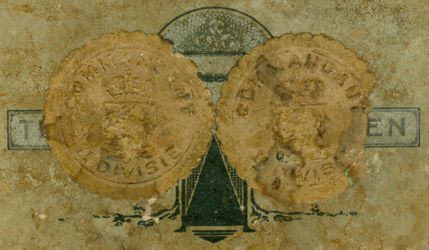 |
|
|
It was a bit
delayed, but Mr. Frits van Rhijn from he Museon museum contacted us and sent us
some information and a number of pictures. He also asked us for our opinion
about the deck and based on the provided pictures we have send him some remarks
about their deck and the museum has adjusted their item description.
The courts had the same designs as our court cards and to our surprise the
Museon deck -despite their first item description- held a joker too.
|
We have
selected a few cards from the provided pictures to show here. |
|
The courts
have the same designs (of course with small differences in detail), but
the backs show that they were not made from the other half of the
Veldpost cards. They were apparently made from an other carton form or
card, as the lines on the face of some playing cards do not match with
those of the Veldpost cards. The box is definitely made for these
playing cards. The front has the date and place drawn on it, but the
back a complete illustration. Although the joker has a completely
different design, done in 2 colors only, and has no signature, there are
enough similarities in style to presume that the joker was made by the
same G.A. |
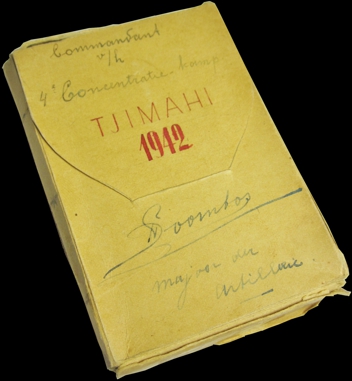
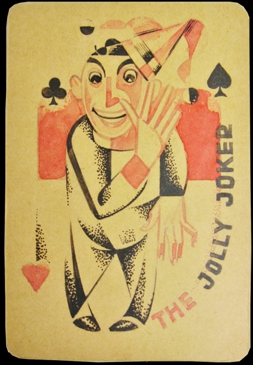


BACK
TO PRESENT MONTH

























